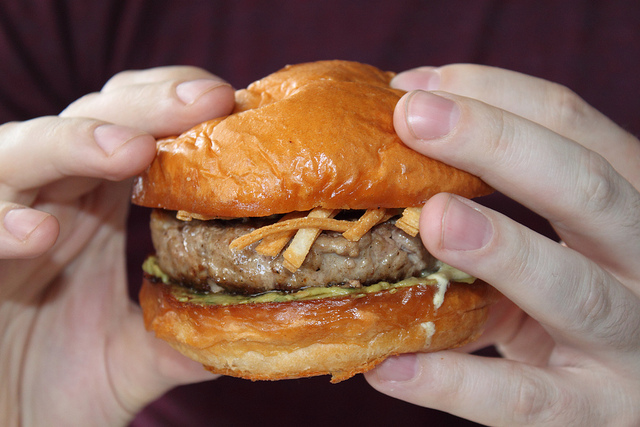Difference Between UMAMI AND KOKUMI
As it is so clear from their unique pronunciation, Umami and Kokumi are two Japanese words which have become increasingly popular recently, especially with the spread of Japanese cuisines throughout the world and more importantly, due to their recent recognition by Western scientists.
Umami, in Japanese, translates to a ‘delicious taste’, which has now become the 5th sensation of taste, adding to the very common sweet, sour, faulty and bitter. It is widely recognized around the world as a generalized sense of food that is delicious. Its literal meaning is a ‘pleasant savoury taste’. Sensory professionals go on to describe umami as ripe, savoury or meaty.
Kokumi, another word of similar origin which is also used to denote a sensation of taste, translates to ‘rich taste’. The distinctive feature of the kokumi sensation is that it derives its fame and popularity from the fact that the sensation it denotes is of a very powerful intensity which remains for quite some time! The common idea is that it gives depth to the dish and harmonizes the flavours of all the ingredients. Two words that have been associated with kokumi every now and then are ‘heartiness’ and ‘mouthfulness’, and help to explain the exact sensation that kokumi signifies.
Kokumi is due to components or compounds in a dish that have their own characteristic flavour, but also enhance the overall flavour of the dish. Some researchers have termed it as the sixth taste, which is similar to the bitter taste, and has its own receptors in the tongue. Japanese researchers, however, term the calcium taste kokumi and argue that it does not have a taste in itself but actually triggers the tongue’s calcium receptors and hence enhances sweet, salty and umami taste sensations.
Differentiating the two on scientific ground, Umami describes the flavour one gets on consuming food that contains the amino acid, glutamate and ribonucleotides such as insinuate and guanylate. The two mentioned nucleotides are considered to contribute the most to the taste sensation we term Umami. In contrast to this, the Kokumi sensation is due to chemical compounds that include calcium, protamine, gluthathione and L-Histidine.
In order to give a more hands-on and practical understanding and realization of these sensations, it is necessary to give some examples of foods from our everyday diet that give the sensations as these words describe. As you are about to discover, you have already come across these tastes without realizing! Although it is not always possible to pinpoint whether the exact flavour of some edible item corresponds to Umami or Kokumi, it is possible to point out that which of the above listed components or chemical compounds are found in which food. Meat dairy products, vegetables and fish are some examples of food items that contain umami-rich compounds. In addition to this, oysters, shrimps, shiitake mushrooms are also rich in compounds that are responsible for the umami sensation. Milk, onion, cheese and yeast extract, however, are some of the foods that, when consumed, usually do give the kokumi sensation at some point.
There are many concerns in society today such as high blood pressure and diabetes that are the result of high salt and sugar intakes respectively. Our umami and kokumi sensations provide useful substitutes to tastes offered by these could-be-harmful additives. Umami, for example, promotes satiety and at the same time helps in reducing sodium (a component of sodium chloride or common salt). In fact, the umami sensation is also able to enhance the saltiness of a given food item without actually increasing the sodium content. Moving on to kokumi, it does no less in contributing to healthier food and at the same time in no way compromising the flavour of any given food by reducing the sodium as well as oil, sugar, fat and MSG content.
Summary of differences expressed in points:
- Umami-delicious taste/pleasant flavour taste; kokumi-rich taste, longer lasting
- Umami-5th flavour after sweet, sour, bitter, faulty; kokumi-6th
- Umami due to the amino acid, glutamate & ribonucleotides such as insinuate and guanylate; kokumi due to calcium, protamine, gluthathione and L-Histidine
- Umami foods: Meat dairy products, vegetables, fish; kokumi foods: milk, onion, cheese, yeast extract,
- Umami-substitutes for salt(sodium); kokumi-substitutes for salt, oil, sugar, fat, MSG
- Difference Between Vascular Cambium and Cork Cambium - November 1, 2023
- Difference Between DevOps and Developer - September 10, 2023
- Difference Between Acute Gastritis and Chronic Gastritis - April 3, 2023
Search DifferenceBetween.net :
3 Comments
Leave a Response
References :
[0]https://www.flickr.com/photos/stevebott/4590635818/


would you please forward me the source of your information regarding the difference in umami and kokumi please.
i request this because i feel there may be discrepancies in your information.
Kindest regards
Andrew Johnston
Product Development Chef – ASDA Walmart UK
Master Craftsman – Craft Guild Of Chefs UK
Winner – Restaurant Associates Rising Star Culinary Award UK
On Mr. Johnston’s concerns: The differences get pretty tight in terms of molecules and their activity upon specific receptors. Although discovered as responses to single molecules (i.e., amino acids), in taste tests and molecular modeling, the differences lie in the amino acid sequence of short peptides (2 – 8 amino acids). So it is a little more complex than just attributing these sensory activities to single molecules or combinations thereof.
As for your summary points in the article..
1) The taste is salty, not faulty
2) gluthathione is spelled correctly as glutathione.
3) (This is the funny one) The ribonucleotide is inosinate, not insinuate.
great site…many thanks